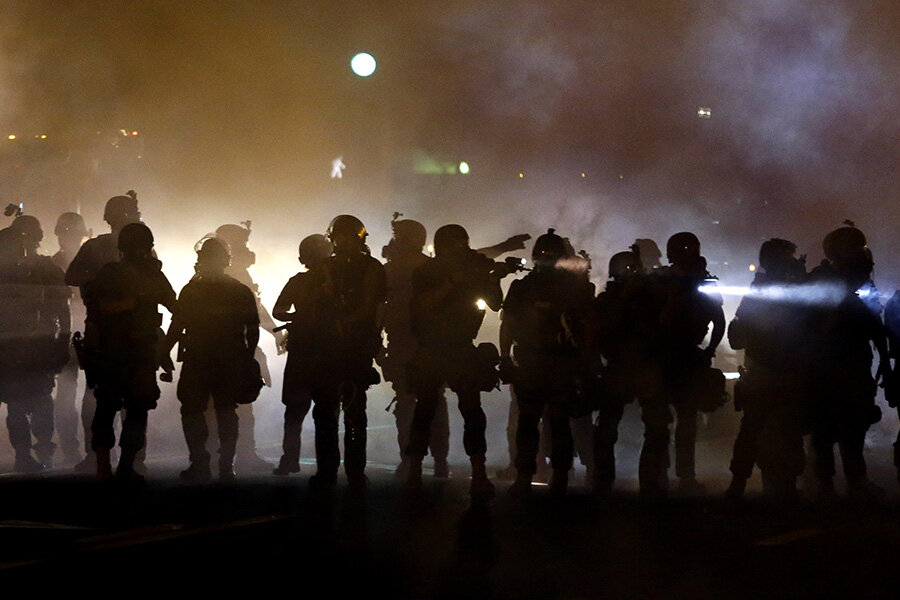Federal report faults police actions during Ferguson unrest
Loading...
| St. Louis, Mo.
Police antagonized crowds who gathered to protest in Ferguson after Michael Brown's death last summer, violated free-speech rights and made it difficult to hold officers accountable, according to a Justice Department report that found across-the-board flaws in law enforcement's response.
The report summary, which covers the two-week period of unrest that followed a white officer fatally shooting the unarmed black 18-year-old in August, also faulted officers for inappropriately using tear gas, withholding information that should have been made public and relying on military-style equipment "that produced a negative reaction" in the community.
The summary is part of a longer after-action report to be released in the coming weeks focusing on the actions of police in Ferguson, St. Louis city and county and the Missouri State Highway Patrol.
Details of the summary were first reported by the St. Louis Post-Dispatch on Tuesday. The Associated Press later obtained a copy.
The report suggests that the protests after Brown's death on Aug. 9 were aggravated by the community's hostility toward Ferguson police and worsened when authorities didn't quickly divulge details of his death.
"Had law enforcement released information on the officer-involved shooting in a timely manner and continued the information flow as it became available, community distrust and media skepticism would most likely have been lessened," according to the document.
A grand jury and the Justice Department both declined to prosecute officer Darren Wilson, who is white and later resigned, but another Justice Department report released in March was critical of Ferguson police and the city's profit-driven municipal court system.
The after-action report was announced in September by then-Attorney General Eric Holder and is separate from the other federal civil rights inquiries.
The summary, which includes 45 findings, identified a slew of poor policing tactics: The use of dogs for crowd control incited fear and anger, tear gas was sometimes used without warning on people who had nowhere to retreat and officers were inconsistent in using force and making arrests, the Justice Department said.
More broadly, though, the report chastised the Ferguson Police Department for failing to manage the community reaction and develop a long-term strategy, as well as for maintaining poor relationships with the black community — a problem that "over time led to devastating effects."
"The protests were ... also a manifestation of the long-standing tension between the Ferguson (Police Department) and the African-American community," the report summary stated.
The report was prepared by the Justice Department's Community Oriented Policing Services office, a component that works to build trust between police departments and the communities they serve. The office, which also conducts after-action reports on high-profile police responses, said Tuesday it'll release its final report on the Ferguson response in coming weeks.
Representatives from the police agencies who were analyzed either declined to comment Tuesday or did not return messages from the AP seeking comment.
St. Louis Police Chief Sam Dotson told the Post-Dispatch that he didn't have enough information yet to comment on the report, but that he hopes that it provides a blueprint for dealing with similar situations in the future.
Among the problems singled out in the report summary is the "highly elevated tactical response" that police used from the beginning, which set a tone that "limited options for a measured, strategic approach." It acknowledges that a tactical response was sometimes called for, but an "elevated daytime response was not justified and served to escalate rather than de-escalate the overall situation."
The report also found that police "underestimated the impact social media had on the incident and the speed at which both facts and rumors were spread and failed to have a social media strategy."
In repeating "vague and arbitrary" commands for protesters to keep moving, the police wound up violating demonstrators' First Amendment rights.
"While law enforcement must meet its duty to protect people and property during mass demonstrations and protests," the Justice Department said, "it can never do so at the expense of upholding the Constitution and First Amendment-protected rights."







